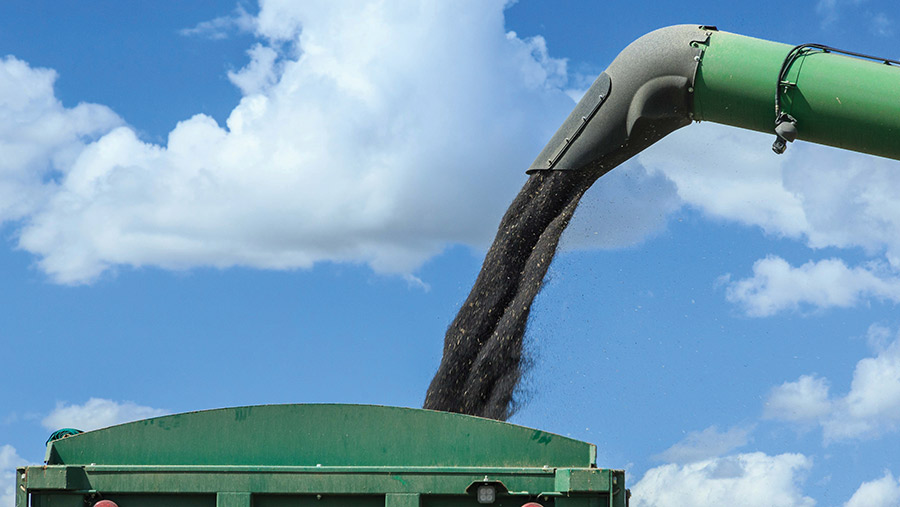Why OSR vigour and late disease score is key to 2023 yields
 Harvesting OSR © Tim Scrivener
Harvesting OSR © Tim Scrivener Oilseed rape varieties with good early vigour and resistance to late season disease have been the top performers in Agrii’s variety plots in Lincolnshire.
Like many areas of the UK, the Revesby site experienced high cabbage stem flea larvae pressure this spring and Agrii technical manager David Leaper says some varieties have coped better than others.
Yields are backing up observations that varieties with the right growth habit are most likely to survive larval infestations in spring, and deliver a good yield.
See also: How OSR variety choice helps crops survive flea beetle
The right growth habit is one that produces good biomass and ground cover by late December to withstand the conditions and fast spring growth.
“For example, has the variety got the speed to grow away from the flea beetle larvae threat in spring?” he says.
The commercial crop (non-trial) averaged 3.7t/ha, but there were marked differences between varieties, with five yielding over 4t/ha.
These were Turing, Kanzzas, Hanneli, Murray and Vegas, with Turing leading with 4.2t/ha. In the conventional category, Aardvark was the top yielder at 3.8t/ha.
In conclusion, David says those with the ideal spring growth habit performed better. For example,
Kanzzas had the third-highest spring biomass and it had the lowest cabbage stem flea beetle (CSFB) count in mid-April.
Consequently, Kanzzas had the lowest larval damage at just under 40%, this compares with nearly 80% damage for the worst affected varieties such as Tennyson.
Stem disease
This season, David also observed that varieties with good resistance to stem health also tended to have the highest yields.
Newer varieties such as Turing, Murray and Vegas are better with late disease tolerance.
This is for stem diseases such as verticillium wilt and light leaf spot (Cylindosporium).
He points out that even within the same variety, growers can see resistance differences between foliar light leaf spot earlier in the season and light leaf spot on the stem.
“Remember the Recommended List ratings are for foliar lesions.”
David explains that these late diseases affect the vascular tissue and impair grain fill, so affecting seed size.
“This could be one reason for some of the yield differences seen this season.”
Recommendations
In high CSFB areas, go for a variety with good early growth habit, such as Kanzzas, which is a candidate up for recommendation this autumn and is now available for drilling. For conventionals, he recommends Aardvark.
For growers looking for good stem health as well, David suggests Vegas and Turing.

